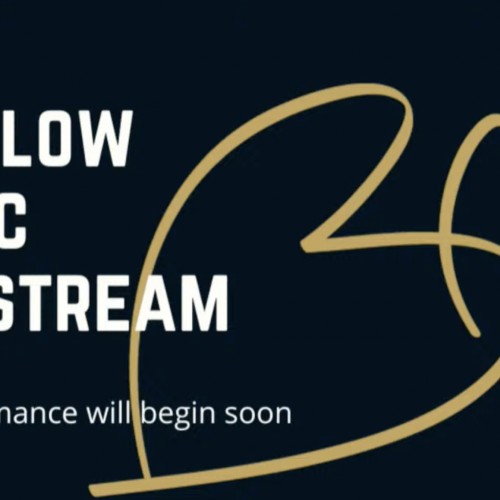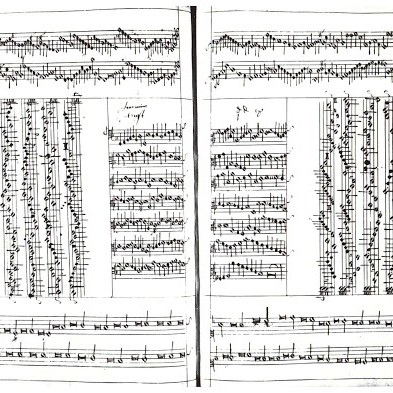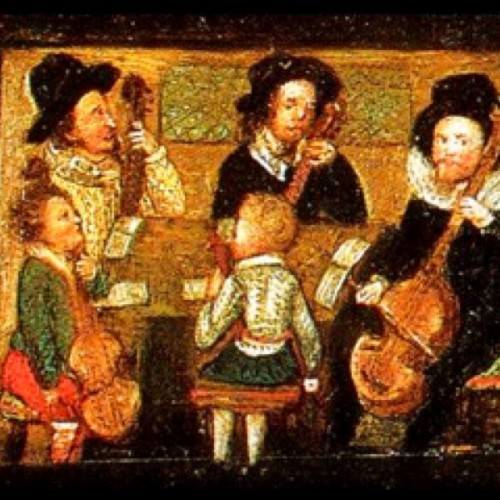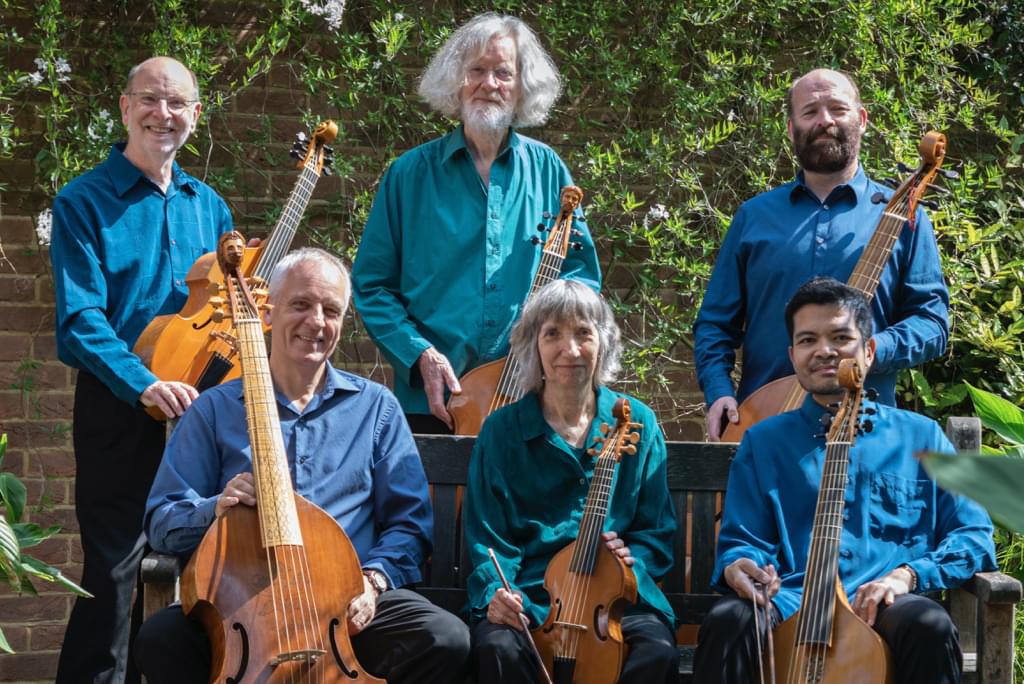

The Rose Consort of Viols takes its name from a famous family of sixteenth-century viol makers, whose instruments coincided with the growth of English consort music. With its unique blend of intimacy, intricacy, passion and flamboyance, this music ranges from Taverner and Byrd, to Lawes, Locke and Purcell, and forms the nucleus of the Rose Consort’s programmes.
About us and our music
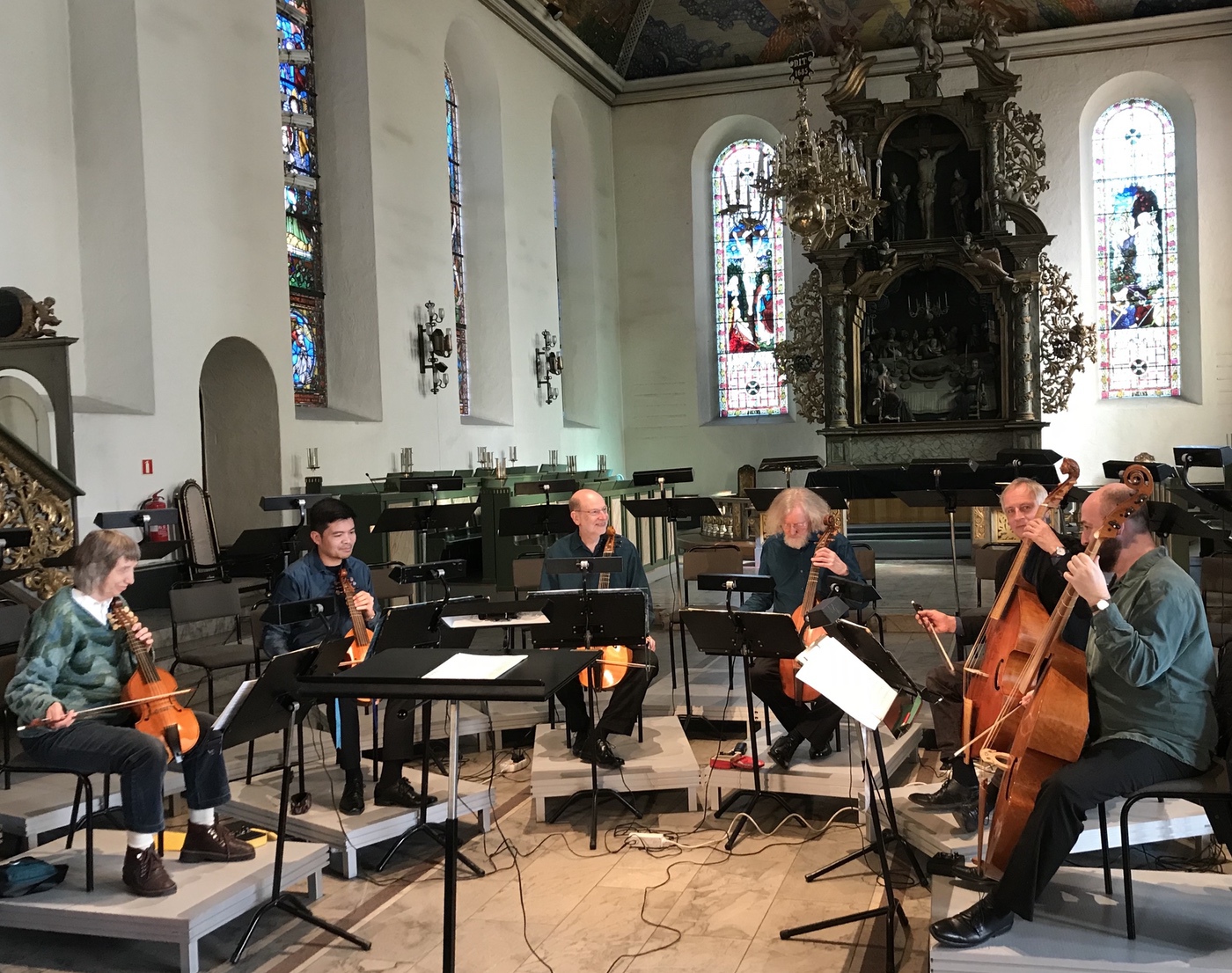
For nearly four decades the Rose Consort has been delighting audiences across the UK, Europe and further afield. It has performed in London’s Wigmore and South Bank Halls, is heard regularly on the BBC, and makes frequent appearances at York Early Music Festival and at the London International Exhibition of Early Music. It has performed at Festivals in Canada (Festival Vancouver) and the USA (Boston, New York, Boulder, Portland and Seattle), and also featured as a guest ensemble at the Pan-Pacific Gamba Gathering in Hawaii.
Our instruments
By using instruments and playing techniques appropriate to the various pieces we perform, we bring the musical riches of the past to life again. For the earliest viol music, from c. 1500, we use specially commissioned viols based on those in a 1497 painting by Lorenzo Costa in Bologna. We also have a set of instruments copied from originals from mid-sixteenth century Venice, and for later English music, viols based on Tudor and Stuart originals.
Our concert programmes
We have received awards for research and performance of specially devised programmes, and have also commissioned and performed new pieces for voices and viols by Judith Bingham, John Woolrich, and Ivan Moody. For many years the Consort appeared at Dartington International Summer School, giving concerts and coaching ensembles, activities it continues at Benslow Music in Hitchin.
Rose Consort programmes often include internationally renowned guest artists. These have included soprano Emma Kirkby, mezzo-soprano Clare Wilkinson, the vocal groups The Marian Consort, Gallicantus, I Fagiolini, Stile Antico, Red Byrd and the BBC Singers, lutenists Jacob Heringman, Jakob Lindberg, and keyboard player Timothy Roberts.
Our recordings
The Rose Consort can be heard on a series of more than 20 highly acclaimed recordings for the Delphian, Deux-Elles, Naxos and other labels, each representing a different aspect of the Consort’s wide-ranging repertory of music for viols, often with voices, lute or organ.
Rose Consort Music
Below are some sample tracks
Tallis In Nomine 2
A jaunty piece by a composer who worked during the reigns of all four Tudor monarchs.
Heinrich Isaac: Agnus Dei
From the Missa La Spagna, this sounds like a courtly basse danse, played on our ‘Costa’ viols (1497).
John Dowland: M. Buctons Galiard
A dance published in 1604, based on Lassus’s famous song ’Susanne ung jour’.
Ludwig Senfl: Ich stund an einem Morgen
A melancholy German popular tune in a cunning arrangement, played on viols after Linarol.
Vincenzo Ruffo: La Gamba
A thoroughly Italian piece published in Milan in 1564, but copied out in Elizabethan England by Robert Dow.
Peter Philips: Paget Galliard
This beautiful galliard was composed for Thomas, Baron Paget, a Catholic exile from Protestant England.
Rose Consort News
Less acidic than Fretwork, less macho than Hespèrion XX, the Rose Consort of Viols have a blend that might have been passed through muslin.
Perhaps no instrumental sound evokes a past age more completely than that of a group of viols. The Rose Consort spoke irresistibly of the Elizabethan worlds of theatrical, courtly and domestic music making.
Beguiling: the Rose Consort is rightly well established as one of the world’s premier ensembles of its type.
About the Rose Consort of Viols
The Rose Consort of Viols takes its name from the celebrated family of viol makers, whose work spanned the growth and flowering of the English consort repertoire.
NAVIGATION
Copyright 1990-2024 © Rose Consort. All Rights Reserved. | Home


